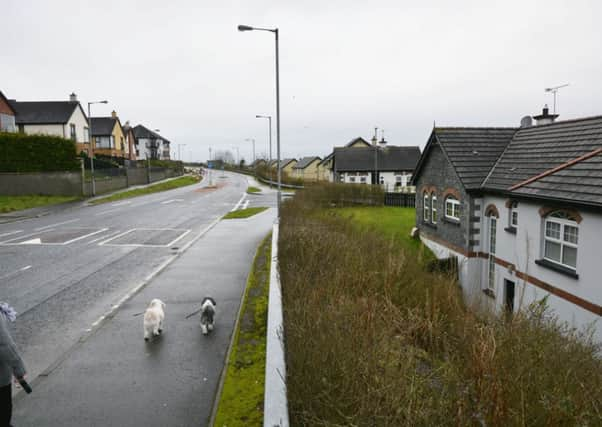Disaster plan covers 1.5k homes across southern Waterside


The new Top of the Hill Community Resilience Plan advocates the establishment of emergency rest centres (ERCs), survivor reception centres (SRCs) and family and friends reception centres (FFRCs) to act as community field centres in the wake of disasters.
A Community Emergency Group (CEG) operating from nerve centres at Hillcrest House in Top of the Hill and St Columba’s Parish Hall on Chapel Road, are to spearhead the response.
Advertisement
Hide AdAdvertisement
Hide AdThe plan, which has been obtained by the Sentinel, encompasses a large area of the east of the city, which it says has been “subject to numerous emergency incidents” in the past.


According to its authors, the Top of the Hill Neighbourhood Safety Forum: “It is the intention of this document to assist people to respond and recover from such events as effectively and quickly as possible.”
Whilst the plan is largely adherent to the Victoria and Clondermot wards it also provides for the inclusion of The Triangle, in Ebrington, and, Hollymount Park, part of which lies in the Hollymount ward. Over 1,500 homes fall under its aegis.
The report lists the Top of the Hill Neighbourhood Renewal area - including Top of the Hill, Gobnascale, Bard’s Hill, Oldbridge, Tamneymore, Foxhill, Harbourview, Strabane Old Road, Derryview, Woodside Heights, Fountain Hill and side streets, Chapel Road and side streets, Knockwellan Park, Lisaghmore and new estates adjacent to the Trench and Belt Roads - as the core focus of the plan.
Advertisement
Hide AdAdvertisement
Hide AdBut justifying the inclusion of the peripheral Triangle and Hollymount Park, it says: “These locations form part of the overall Waterside Neighbourhood Renewal Area and have been subject to numerous emergency incidents.”
Last week Derry City Council and Top of the Hill Neighbourhood Safety Forum announced they wanted to provide vital information about local resources such as temporary accommodation or people who have knowledge, skills and equipment which can help others and identify vulnerable people within the community.
The plan, it was announced, also provides a procedure for “coordination at a local level with other responding agencies which reduces panic and confusion.”
Several potential emergencies are outlined in the document including severe weather, bombs or bomb threats, suicide/tragedy, flooding, summer interface unrest at the Top of the Hill/Irish Street boundary, fires and power cuts or gas leaks.
Advertisement
Hide AdAdvertisement
Hide AdIt outlines how these might affect the community and how the CEG can respond.
For example, access, the increased chance of accidents and social isolation are identified as the principle risks likely to result from severe winter weather or flooding.
The plan suggests the CEG activates ‘Operation Snow Patrol’ - the previously very successful community response to severe winter weather in 2011/12 - in the event of severe weather.
The CEG flood response would involve identifying vulnerable homes and encouraging the take up of insurance.
Advertisement
Hide AdAdvertisement
Hide AdPotential political violence is not overlooked as the proposed catchment area is no stranger to bomb scares and sporadic interface trouble between young Catholic and Protestant youths at the Top of the Hill/Irish Street interface.
Disruption caused by evacuation could be ameliorated by the identification of safe locations, the minimisation of disturbance and the implementation of a planned street clean up by the CEG in the event of a bomb or bomb threat.
The CEG could also plan for periods of heightened tension and build on the success of previous interventions in lessening the effects of interface violence.
The report goes on to define the three types of centre to be established in the face of emergencies.
Advertisement
Hide AdAdvertisement
Hide AdERCs will be places of shelter, care and support for evacuees. They’ll be used in the case of natural events such as flooding or industrial accidents involving hazardous materials.
SRCs will be set up as a facility where survivors not requiring acute hospital treatment can be taken for short term shelter, first aid, documentation and interview.
And a FFRC will provide a focal point for relatives and friends where information advice and support can be obtained in the event of a major incident.